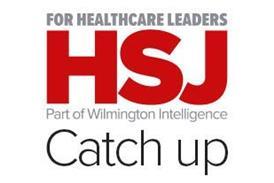The fortnightly newsletter that unpacks system leaders’ priorities for digital technology and the impact they are having on delivering health services. Contact Nicholas Carding in confidence here.
As covid-19’s enormous cloud engulfs the NHS, it is already clear that one major silver lining will be the health service’s attitude towards technology.
Electronic patient records and other essential technology services are being installed within days at new field hospitals across the country while — in the words of one influential GP — primary care has been transformed from a walk-in service to a “dial-in or click-first service” in the space of weeks.
Additionally, hundreds of thousands of people across the country are turning to digital services — such as the NHS App or 111’s online service — for help about their conditions, coinciding with a much-needed drop in emergency department attendances.
All in all, there were some rays of light for Matt Hancock to reflect on during his self-isolation amid this horrible pandemic.
But NHS tech chiefs have much work to do in the battle against covid-19.
Keeping the infrastructre solid
For NHS Digital, the overarching priority is simple: Keep vital tech infrastructure stable and secure.
This includes essential services such as the NHS Spine, Summary Care Record, and electronic referrals and prescribing systems — all of which help keep data flowing smoothly across the NHS.
The sheer amount of home working now taking place is putting these systems under greater strain, but no major problems have been reported yet.
NHSD staff are also working flat out to manage the extreme rises in demand for its patient-facing services, such as the NHS App, NHS Login and 111 online.
As HSJ revealed earlier this week, demand for these services has gone through the roof in what is an encouraging news story for the NHS, given the push to make the public more aware of digital health services.
Work is now ongoing to adapt these solutions to the fast-moving developments of covid-19, for example by improving digital triage and authentication processes on the NHS App and Login service.
While the explosion of video consultation rightly remains the top story for primary care, another key piece of work is to allow GPs to access records of patients registered at other surgeries. Making gains here is likely to become increasingly important as senior NHS chiefs expect GPs succumbing to the virus to have their workload subsumed by neighbouring practices.
Another big piece of the puzzle is collecting data and using it effectively in the battle against covid-19.
NHSD has been busy working on an algorithm that can help identify vulnerable people at risk of contracting the virus, based on factors like age, prescribing history, and flu jab eligibility. The organisation is also collecting covid-19 activity data through NHS 111.
Dawn of the data dashboards
However, when it comes to using data, the headline-grabbing work is being done by NHSX.
The Download will explore the contact tracking app under development by the unit — and the ensuing ethical arguments — in a future column.
Separately, in a blog published on Saturday, NHSX CEO Matthew Gould and two colleagues set out plans for a data platform which will pull together “multiple data sources into a single, secure location”.
The data will come from NHS organisations and social care, and it will also include NHSD’s 111 online and call centre data and covid-19 test results from Public Health England.
Hospital data collected will include occupancy levels (broken down by general/critical care beds), emergency department capacity and statistics about lengths of stay for covid-19 patients.
The results will be presented as “dashboards” which will help national leaders understand the spread of the virus and capacity in the NHS to deal with it.
It is hoped all this information will help ensure critical equipment, such as ventilators or personal protective equipment, is given to hospitals with the greatest need. It could also help decision-making on diverting patients to less busy sites based on demand, resources and staffing capacity.
Data to be destroyed
Several large data companies — including Google, Microsoft, and Amazon — have been hired to work on the scheme.
NHSX has stressed all the data in the “data store” is anonymous, and subject to controls by data protection legislation to ensure individuals cannot be identified. However, the controls include pseudonymising data, which campaigners argue makes re-identification possible.
The databank will be “closed” once the pandemic “abates”, and the unit said it had agreed for the private companies involved to stop processing data and “either destroy or return” data to NHS England/Improvement at that point.
While privacy campaigners will be following this with the eyes of Argus, there is no doubt the creation of this databank and the dashboards is set to serve up some valuable insight and lessons for a government keen to improve its data collection, aggregation and analysis.
Hopefully this, along with the rapid adoption of tech across the NHS and wider care system, will be one of the biggest silver linings of the terrible crisis that has disrupted our lives.

























2 Readers' comments